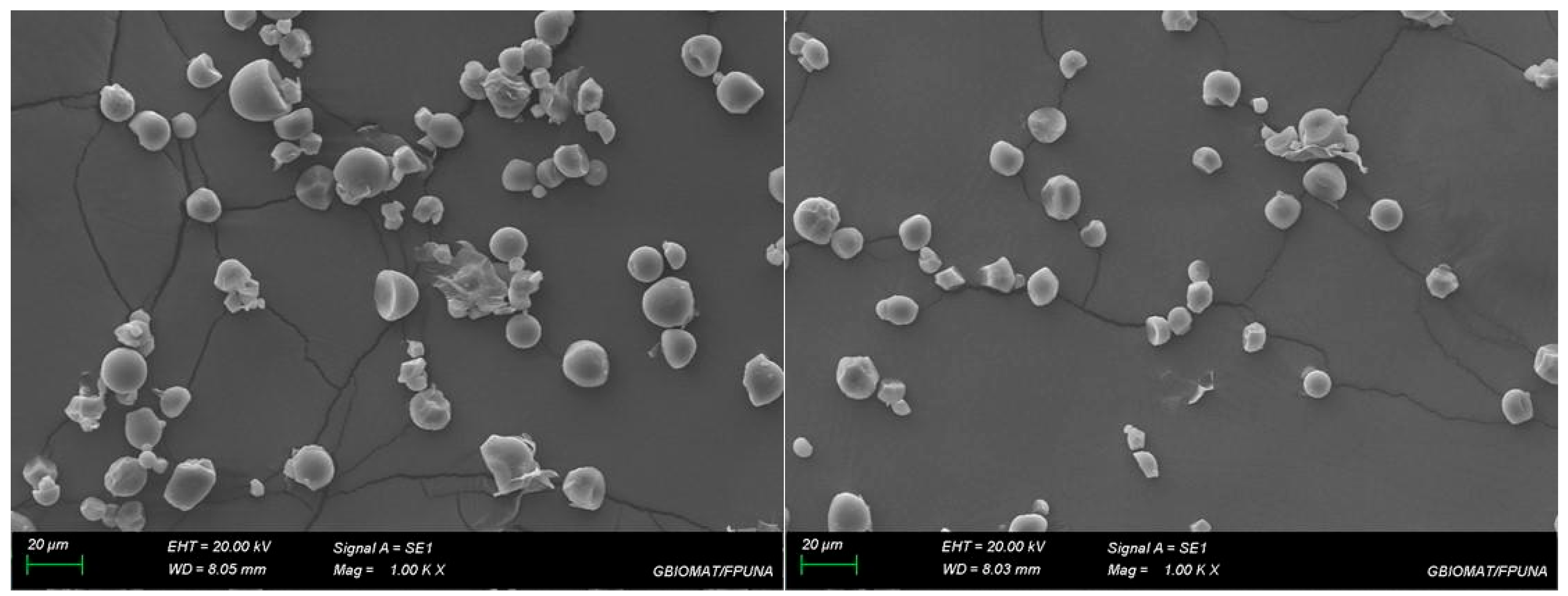Contribution to the Knowledge of Manihot Biodiversity: Study of a Wild Cassava from Paraguay, Manihot takape sp. nov. †
Abstract
1. Introduction
2. Materials and Methods
2.1. Raw Material
2.2. Experimental Design
2.3. Analysis
2.3.1. Centesimal Composition
2.3.2. Morphological Characterization
3. Results and Discussion
3.1. Centesimal Composition
3.2. Morphological Characterization
4. Conclusions
Author Contributions
Funding
Institutional Review Board Statement
Informed Consent Statement
Data Availability Statement
Conflicts of Interest
References
- Mohidin, S.R.; Moshawih, S.; Hermansyah, A.; Asmuni, M.; Shafqat, N.; Ming, L. Cassava (Manihot esculenta Crantz): A Systematic Review for the Pharmacological Activities, Traditional Uses, Nutritional Values, and Phytochemistry. J. Evid.-Based Integr. Med. 2023, 28, 1–26. [Google Scholar] [CrossRef] [PubMed]
- Caballero, C.; Enciso, C.; Tullo, C.; González, J. Guía Técnica Cultivo de la Mandioca; FCA, UNA: San Lorenzo, Paraguay, 2019; pp. 15–20. [Google Scholar]
- De Egea, J. Recursos Fitogenéticos del Paraguay: Sinopsis, Atlas y Estado de Conservación de los Parientes Silvestres de Especies de Importancia para la Alimentación y la Agricultura. Parte I. Primera Edición; Mereles, F., Degen de Arrúa, R., Eds.; Universidad Nacional de Asunción: San Lorenzo, Paraguay, 2018. [Google Scholar]
- De Egea, J.; Peña-Chocarro, M.d.C.; Mereles, F.; Céspedes, G. Manihot takape sp. nov. (Euphorbiaceae), a new tuberous subshrub from the Paraguayan Chaco. PhytoKeys 2018, 103, 1–12. [Google Scholar] [CrossRef] [PubMed]
- Horwitz, W.; Chichilo, P.; Reynols, H. (Eds.) Official Methods of Analysis of the Association of Official Analytical Chemist, 17th ed.; AOAC: Gaithersburg, MD, USA, 2000. [Google Scholar]
- Martínez-Hernández, C.M.; Brito-Castillo, I. Caracterización de algunas propiedades físico-mecánicas y químicas de la yuca (Manihot esculenta Crantz). Rev. Cienc. Técnicas Agropecu. 2019, 28, 2–12. [Google Scholar]
- Buitrago, A.; Julian, A. La Yuca en la Alimentación Animal; Centro Internacional de Agricultura Tropical (CIAT): Cali, Colombia, 1990; pp. 36–38. [Google Scholar]
- Ceballos, H.; Sánchez, T.; Chávez, A.L.; Iglesias, C.; Debouck, D.; Mafla, G.; Tohme, J. Variation in crude protein content in cassava (Manihot esculenta Crantz) roots. J. Food Compos. Anal. 2006, 19, 589–593. [Google Scholar] [CrossRef]
- Onodu, B.C.; Culas, R.J.; Nwose, E.U. Facts about dietary fibre in cassava: Implication for diabetes’ medical nutrition therapy. Integr. Food Nutr. Metab. 2018, 5, 1–5. [Google Scholar] [CrossRef]
- Hernandez-Medina, M.; Torruco, J.G.; Chel-Guerrero, L.; Betancur-Ancona, D. Caracterización fisicoquímica de almidones de tubérculos cultivados en Yucatán, México. Ciênc. Tecnol. Aliment. 2008, 28, 718–726. [Google Scholar] [CrossRef]
- Sívoli, L.; Pérez, E.; Rodríguez, P. Análisis estructural del almidón nativo de yuca (Manihot esculenta C.) empleando técnicas morfométricas, químicas, térmicas y reológicas. Rev. Fac. Agron. Univ. Cent. Venez. 2012, 29, 293–313. [Google Scholar]

| Centesimal Composition in g/100 g | Manihot takape sp. nov. |
|---|---|
| Moisture | 86.4 ± 1.2 |
| Protein | 0.624 ± 0.041 |
| Lipids | Nd |
| Ash | 0.475 ± 0.048 |
| Fiber | 3.32 ± 1.03 |
| Carbohydrates | 20.1 ± 0.9 |
| Root Weight in g | Longitudinal Diameter in cm | Transverse Diameter in cm |
|---|---|---|
| 110 ± 1.2 | 6.56 ± 0.2 | 5.56 ± 0.2 |
| Largest Diameter of the Granule in µm | Minor Diameter of the Granule in µm | Granule Shape |
|---|---|---|
| 12.5 ± 3 | 10.7 ± 3.2 | oval, round and truncated |
Disclaimer/Publisher’s Note: The statements, opinions and data contained in all publications are solely those of the individual author(s) and contributor(s) and not of MDPI and/or the editor(s). MDPI and/or the editor(s) disclaim responsibility for any injury to people or property resulting from any ideas, methods, instructions or products referred to in the content. |
© 2025 by the authors. Licensee MDPI, Basel, Switzerland. This article is an open access article distributed under the terms and conditions of the Creative Commons Attribution (CC BY) license (https://creativecommons.org/licenses/by/4.0/).
Share and Cite
Caballero, S.B.; Piris, P.A.; González, M.N.; Ferreira, F.P.; Villalba, R.A.; González, Y.P.; González, G.C. Contribution to the Knowledge of Manihot Biodiversity: Study of a Wild Cassava from Paraguay, Manihot takape sp. nov. Biol. Life Sci. Forum 2025, 50, 9. https://doi.org/10.3390/blsf2025050009
Caballero SB, Piris PA, González MN, Ferreira FP, Villalba RA, González YP, González GC. Contribution to the Knowledge of Manihot Biodiversity: Study of a Wild Cassava from Paraguay, Manihot takape sp. nov. Biology and Life Sciences Forum. 2025; 50(1):9. https://doi.org/10.3390/blsf2025050009
Chicago/Turabian StyleCaballero, Silvia B., Patricia A. Piris, Monserrat N. González, Francisco P. Ferreira, Rocío A. Villalba, Yenny P. González, and German C. González. 2025. "Contribution to the Knowledge of Manihot Biodiversity: Study of a Wild Cassava from Paraguay, Manihot takape sp. nov." Biology and Life Sciences Forum 50, no. 1: 9. https://doi.org/10.3390/blsf2025050009
APA StyleCaballero, S. B., Piris, P. A., González, M. N., Ferreira, F. P., Villalba, R. A., González, Y. P., & González, G. C. (2025). Contribution to the Knowledge of Manihot Biodiversity: Study of a Wild Cassava from Paraguay, Manihot takape sp. nov. Biology and Life Sciences Forum, 50(1), 9. https://doi.org/10.3390/blsf2025050009






